
 i_need_contribute
i_need_contribute
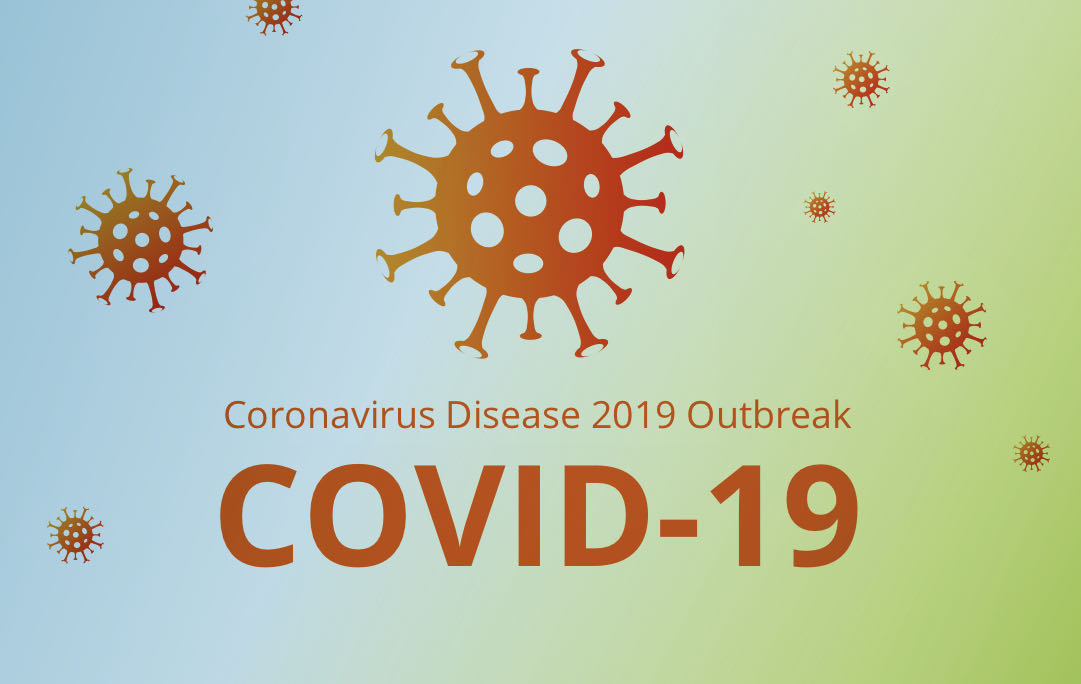
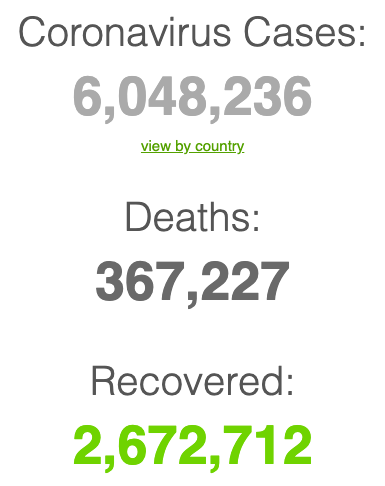

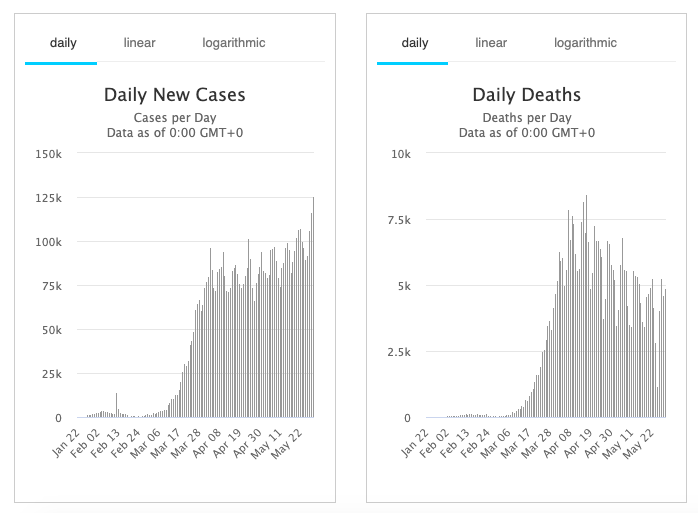
|
Country, |
Total |
New |
Total |
|
World |
6,026,418 |
+125,511 |
366,422 |
|
1,793,530 |
+25,069 |
104,542 |
|
|
468,338 |
+29,526 |
27,944 |
|
|
387,623 |
+8,572 |
4,374 |
|
|
285,644 |
+658 |
27,121 |
|
|
271,222 |
+2,095 |
38,161 |
|
|
232,248 |
+516 |
33,229 |
|
|
186,835 |
+597 |
28,714 |
|
|
183,019 |
+567 |
8,594 |
|
|
173,491 |
+8,105 |
4,980 |
|
|
162,120 |
+1,141 |
4,489 |
|
|
148,285 |
+6,506 |
4,230 |
|
|
146,668 |
+2,819 |
7,677 |
|
|
90,638 |
+3,695 |
944 |
|
|
89,418 |
+906 |
6,979 |
|
|
82,995 |
4,634 |
||
|
81,766 |
+1,581 |
458 |
|
|
81,400 |
+3,377 |
9,044 |
|
|
64,028 |
+2,801 |
1,317 |
|
|
58,061 |
+212 |
9,430 |
|
|
52,907 |
+1,993 |
36 |
|
|
46,126 |
+176 |
5,931 |
|
|
42,844 |
+2,523 |
582 |
|
|
40,764 |
+906 |
224 |
|
|
38,571 |
+100 |
3,334 |
|
|
36,476 |
+749 |
4,350 |
|
|
33,860 |
+611 |
23 |
|
|
33,170 |
+638 |
260 |
|
|
31,946 |
+350 |
1,383 |
|
|
30,828 |
+32 |
1,919 |
|
|
29,240 |
+1,837 |
611 |
|
|
26,688 |
+1,322 |
853 |
|
|
25,216 |
+678 |
1,520 |
|
|
25,184 |
+1,072 |
194 |
|
|
24,876 |
+35 |
1,645 |
|
|
23,155 |
+330 |
1,051 |
|
|
22,811 |
+429 |
679 |
|
|
22,082 |
+1,289 |
879 |
|
|
18,982 |
+191 |
1,248 |
|
|
16,987 |
+115 |
284 |
|
|
16,719 |
+36 |
874 |
|
|
16,655 |
+27 |
668 |
|
|
16,634 |
+1,046 |
942 |
|
|
16,531 |
+463 |
488 |
|
|
15,419 |
+717 |
520 |
|
|
13,659 |
+623 |
246 |
|
|
12,531 |
+400 |
326 |
|
|
11,593 |
+81 |
568 |
|
|
11,402 |
+58 |
269 |
|
|
11,354 |
+54 |
242 |
|
|
10,449 |
+397 |
15 |
|
|
9,932 |
+356 |
37 |
|
|
9,820 |
+811 |
41 |
|
|
9,302 |
+387 |
261 |
|
|
9,196 |
+56 |
319 |
|
|
9,134 |
+137 |
638 |
|
|
8,676 |
+460 |
120 |
|
|
8,422 |
+11 |
236 |
|
|
8,387 |
+619 |
293 |
|
|
7,896 |
+171 |
288 |
|
|
7,732 |
+103 |
115 |
Source:https://www.worldometers.info/coronavirus/

Domino Park in Brooklyn on Monday.Credit...Sarah Blesener for The New York Times
Many of the most populous cities in the United States moved cautiously toward reopening key businesses on Friday.
Gov. Andrew M. Cuomo of New York said he expected New York City, where more than 20,000 people have died from the virus, to meet several benchmarks that would allow retail stores to open for curbside or in-store pickup, as well as restarting nonessential construction and manufacturing. As many as 400,000 people could go back to work in that initial phase.
Other major cities that have faced death and economic calamity, like Washington and Los Angeles, also announced plans to continue their reopenings by allowing restaurants, hair salons and barbershops to open their doors, with new safety guidelines.

Waiting in line for a food package in Geneva last week.Credit...Laetitia Vancon for The New York Times
Our Berlin-based reporter Patrick Kingsley and Laetitia Vancon, a Times photojournalist, are driving more than 3,700 miles around Europe to document changes on a continent emerging from coronavirus lockdowns. Here is the latest dispatch, from Geneva. Read them all.
The first people arrived before 2 a.m.
By 4 a.m., more than 100 people stood waiting in the darkness outside the ice-hockey stadium.
By 7 a.m., the line stretched for more than a mile, and by early afternoon last Saturday nearly 3,000 residents of Geneva, one of the world’s richest cities, had filtered through the stadium to receive a food parcel worth about $25.
In medical terms, Geneva has not been as gripped by the coronavirus crisis as other areas of Western Europe. But the crisis has been ruinous for the undocumented and underpaid workers often forgotten about in a city better known for its bankers, watchmakers and U.N. officials — and most of those on lower incomes have had to rely on charity to survive.
Ultimately, that demand led volunteers and city officials to set up a weekly food bank at the ice-hockey stadium near the river.
Among those lining up last weekend was Sukhee Shinendorj, a 38-year-old from Mongolia, who was living on the cusp of poverty even before the pandemic. He had woken up at 1 a.m. and walked two miles to the stadium to try to beat the line. But several people were already there waiting.
“Catastrophe,” he said of his situation. “It’s a catastrophe.”
Behind him in the darkness, a giant Rolex logo shone from the watchmaker’s headquarters across the street — a stark juxtaposition in a city that is being forced to recognize its profound social inequalities.
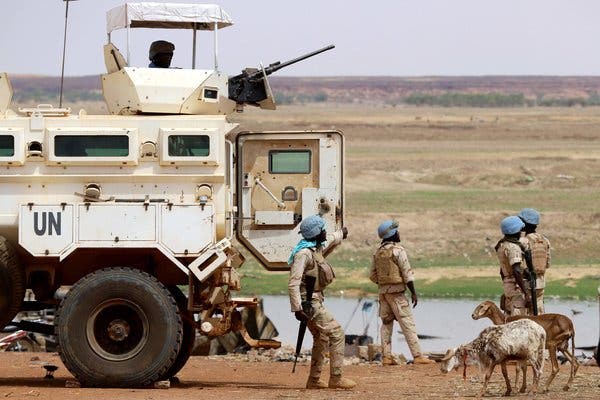
UN peackeepers patrolling in Gao, Mali, last year.Credit...Souleymane Ag Anara/Agence France-Presse — Getty Images
A Cambodian major general has died of the coronavirus while on a U.N. peacekeeping mission in Mali, Cambodian officials said Saturday, the second such death among peacekeepers stationed around the world.
Maj. Gen. Sor Savy, 63, who died on Friday, was deployed to the troubled African nation in April last year. Before the pandemic hit, forcing the United Nations to delay troop rotations, he and his team had been scheduled to return home last month.
U.N. Secretary-General Antonio Guterres said on Friday that Covid-19 had claimed its first two victims among the peacekeepers but did not identify them by name. A peacekeeper from El Salvador died of the illness on Thursday.
Mr. Guterres said the pandemic had changed how peacekeeping troops operate but had not altered their “service, sacrifice and selflessness.”
More than 95,000 men and women serve in 13 U.N. missions around the world. U.N. officials say there are 137 confirmed cases of the virus among peacekeepers, most of them in Mali.
Cambodia contributes about 800 troops to the U.N. missions, including 300 in Mali. Two other Cambodian peacekeepers stationed there tested positive, Cambodian officials said.
“Sor Savy’s death is a huge sacrifice of a Cambodian soldier in a humanitarian mission under the U.N. umbrella and the loss of a bright Cambodian soldier,” a spokesman for Cambodia’s Defense Ministry, Chhum Socheat, said in a Facebook post on Saturday.
As the world tries to get a handle on the coronavirus and emerge from paralyzing lockdowns, public health officials have repeated a mantra: “Test, test, test.” But Japan went its own way, limiting tests to the most severe cases.
Medical experts worried that would blind the country to the spread of infection, allowing cases to explode and swamping hospitals. But instead Japan — the grayest country in the world, and a popular tourist destination with large, crowded cities — has one of the lowest mortality rates from Covid-19 among major nations.
Japan’s medical system has not been overwhelmed, and its government never forced businesses to close, although many chose to. This week, Prime Minister Shinzo Abe declared Japan’s battle against the outbreak a resounding success and took the country off a sort of “lockdown lite” that had lasted only a month and a half.
“By doing things in a uniquely Japanese way, we were able to almost completely end this wave of infection,” Mr. Abe said, adding that what he called the “Japan model” offered a path out of the global pandemic.
It’s still unclear, though, exactly what accounts for Japan’s achievement and what other countries can learn from it. Critics say Japan undercounted coronavirus deaths. And some warn that further waves of infection could undermine the government’s self-congratulatory pronouncements.
The Premier League’s 665-page handbook lays out how club must be run, what players must wear while performing off-field duties and other finer points surrounding the operations of the world’s most popular domestic sports league.
The only thing missing, writes our soccer columnist Rory Smith, is what might happen if the league season cannot be completed.
But two months after its season was suspended, the Premier League has finally resisted the temptation to pretend that it never happened. There is already a 50-page appendix to the handbook governing how teams should safely return to training. And, with a raft of potential caveats, matches will return on June 17.
“The arrival of an aggressive pathogen is, after all, not the only thing that might have caused the cessation of soccer,” Rory writes. “War has done it in the past, civil unrest has done it elsewhere, and player strikes have managed it in other sports.”

Social distancing outside Saints Peter and Paul Church in San Francisco.Credit...John G Mabanglo/EPA, via Shutterstock
The United States Supreme Court on Friday turned away a request from a church in California to block enforcement of state restrictions on attendance at religious services.
The vote was 5 to 4, with Chief Justice John G. Roberts Jr. joining the court’s four-member liberal wing to form a majority. It was the court’s first attempt to balance the public health crisis against the Constitution’s protection of religious freedom. It also it expanded the court’s engagement with the consequences of the pandemic, after rulings on voting in Wisconsin and prisons in Texas and Ohio.
“Although California’s guidelines place restrictions on places of worship, those restrictions appear consistent with the free exercise clause of the First Amendment,” Chief Justice Roberts wrote in an opinion concurring in the unsigned ruling.
“Similar or more severe restrictions apply to comparable secular gatherings, including lectures, concerts, movie showings, spectator sports and theatrical performances, where large groups of people gather in close proximity for extended periods of time,” the chief justice wrote. “And the order exempts or treats more leniently only dissimilar activities, such as operating grocery stores, banks and laundromats, in which people neither congregate in large groups nor remain in close proximity for extended periods.”
Justices Clarence Thomas, Samuel A. Alito Jr., Neil M. Gorsuch and Brett M. Kavanaugh dissented.
“The church and its congregants simply want to be treated equally to comparable secular businesses,” Justice Kavanaugh wrote in a dissenting opinion joined by Justices Thomas and Gorsuch. “California already trusts its residents and any number of businesses to adhere to proper social distancing and hygiene practices.”
“The state cannot,” Justice Kavanaugh wrote, quoting from an appeals court decision in a different case, “‘assume the worst when people go to worship but assume the best when people go to work or go about the rest of their daily lives in permitted social settings.’”
The case was brought by the South Bay United Pentecostal Church in Chula Vista, which said Gov. Gavin Newsom, a Democrat, had lost sight of the special status of religion in the constitutional structure.
“The Covid-19 pandemic is a national tragedy,” lawyers for the church wrote in their Supreme Court brief, “but it would be equally tragic if the federal judiciary allowed the ‘fog of war’ to act as an excuse for violating fundamental constitutional rights.”
A troop of monkeys has attacked a lab technician in a town near India’s capital, snatching blood samples of three coronavirus patients who were being treated at a university hospital.
The technician in Meerut, outside New Delhi, was carrying the samples for routine tests at Lala Lajpat Rai Memorial Medical College on Tuesday when the monkeys struck.
“Monkeys have been a big menace here,” said Dr. S.K. Garg, the college’s principal. “Earlier, patients themselves would feed them, and now it seems they are short of food and getting desperate.”
Video footage appeared to show a monkey chewing at the samples while perched atop a tree, then dropping part of the booty to the ground below.
Dr. Dheeraj Raj, a senior administrator at the college, said that the hospital planned to suspend the technician because he had shot videos of the monkeys instead of returning to work.
“These are sensitive times,” he said.
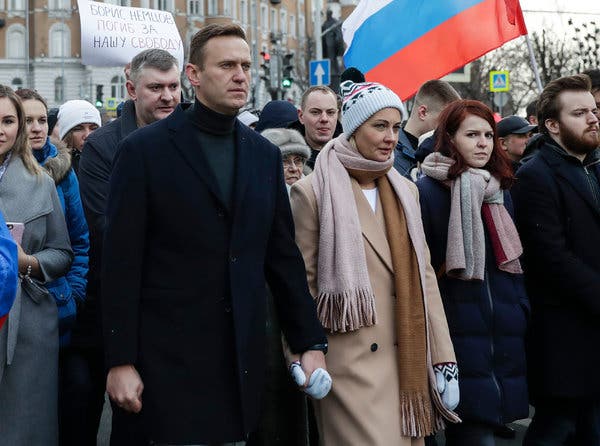
The Russian opposition activist Alexei Navalny at a March demonstration in Moscow.Credit...Pavel Golovkin/Associated Press
This should be the moment for Aleksei A. Navalny, Russia’s most visible opposition leader.
Many Russians are enraged with the Kremlin over its botched handling of the coronavirus pandemic. President Vladimir V. Putin’s approval rating, at 59 percent, is at its lowest ebb since 1999, when he was a lowly prime minister.
At the same time, Mr. Navalny’s audience for his YouTube livestreaming channel tripled as the virus took hold. But whether Mr. Navalny can capitalize on the opportunity remains to be seen.
As Russia fights the coronavirus, the country’s beleaguered opposition, too, finds itself on the back foot. Its proven approach to effecting change — mass street protest — will not be viable for the foreseeable future.
Mr. Navalny and his colleagues are left working from home, pumping out video clips, petitions and social media posts to try to channel the anger of Russians who wonder why Mr. Putin has not done more to help them during the biggest domestic crisis of his tenure.
Mr. Navalny, a 43-year-old lawyer and anticorruption activist, has needled Mr. Putin as corrupt and incompetent for more than a decade, dubbing him the head of “a party of crooks and thieves.” He maintains a nationwide network of branch offices and has honed punchy, populist and sometimes nationalist rhetoric, which reaches millions of social-media followers well beyond the urban middle class.
Along the way, he has spent stints in jail and under house arrest, and the authorities have raided his offices and frozen his bank accounts. But the Kremlin has continued to let him operate, perhaps fearing that tougher action would only raise his popularity and standing.
Mr. Navalny says the Kremlin is losing the support of Russians who had backed Mr. Putin as their guarantor of order and stability. In confrontations over Ukraine and Syria, Mr. Putin cut the figure of a tough, determined leader.
But when a major crisis hit at home — the country’s total of 387,623 coronavirus infections is the third-highest in the world — Mr. Putin appeared to waffle. He issued confusing edicts, delegated key decisions to regional governors and struggled for weeks to get local officials to pay out bonuses he had promised to medical workers.
When experts recommend wearing masks, staying at least six feet away from others, washing your hands frequently and avoiding crowded spaces, what they’re really saying is: Try to minimize the amount of virus you encounter.
The immune system can see off a few viral particles without making you sick. But how much is needed for an infection to take root?
It wouldn’t be ethical for scientists to expose people to different doses of the coronavirus, as they do with milder cold viruses. Common respiratory viruses, like influenza and other coronaviruses, should offer some insight. But researchers have found little consistency.
For SARS, also a coronavirus, the estimated infective dose is just a few hundred particles. For MERS, it is much higher, on the order of thousands.
The new coronavirus, SARS-CoV-2, is more similar to SARS and, therefore, the infectious dose may be hundreds of particles, Dr. Rasmussen said.
But the virus has a history of defying predictions.
Generally, people who harbor high levels of pathogens — whether from influenza, H.I.V. or SARS — tend to have more severe symptoms and are more likely to pass on the infection.
But with the new coronavirus, people who have no symptoms may have just as much virus in their bodies as those who are seriously ill, some studies suggest.
From CNN's Matt Rivers
For months, Latin America watched the rest of the world suffer as the coronavirus spread. It is a spectator no longer.
"This is the new epicenter," said Dr. Marcos Espinal, director of communicable diseases at the Pan American Health Organization.
Months after emerging from a relatively obscure Chinese province, the eye of this viral storm has firmly landed in Latin America.
There are roughly 920,000 confirmed coronavirus cases and nearly 50,000 deaths across the region's 33 countries, but those numbers are fast on the rise.
As new deaths and cases fall in the United States, Europe and Asia, Latin America now stands as the world's sole region where the outbreak is unequivocally reaching new heights.
"In many ways this is no surprise," said Dr. Ana Diez Roux, dean of Drexel University's School of Public Health. "It was predictable that this was going to happen."
Analysis by CNN's Rafael Romo
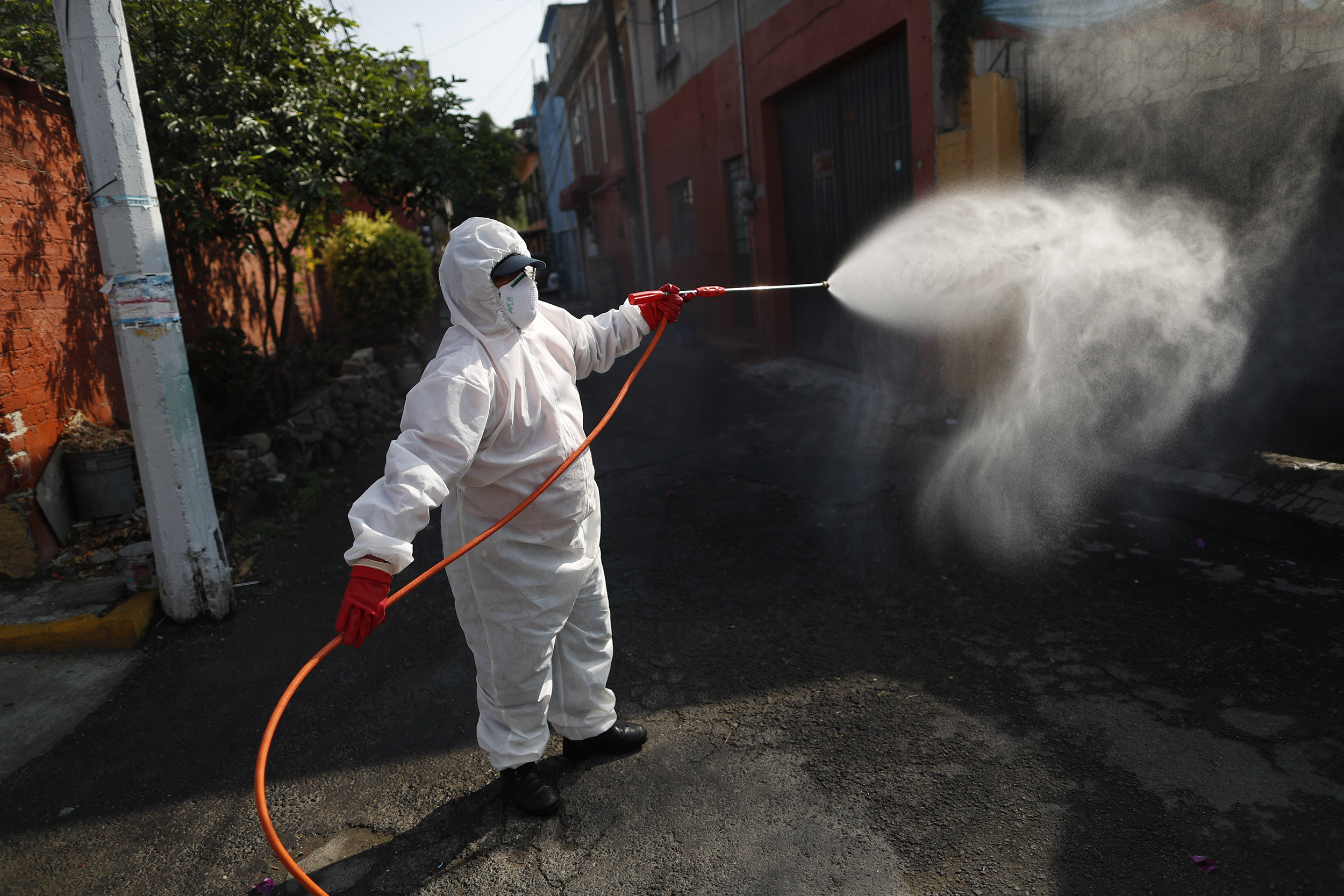 A public safety worker sprays a disinfectant solution in the El Rosario neighborhood of Mexico City, Mexico, on Friday, May 29. Rebecca Blackwell/AP
A public safety worker sprays a disinfectant solution in the El Rosario neighborhood of Mexico City, Mexico, on Friday, May 29. Rebecca Blackwell/AP
Wuhan was the original epicenter. Then the coronavirus migrated to Europe. New York was the next hotspot, and now world health authorities are worried about South America.
The region as a whole is reporting more daily cases than the United States. And politics, rather than policy, seems to have informed the very different approaches that various South American countries have taken -- with ideology appearing to have trumped best medical practices in some cases.
In Mexico, President Andrés Manuel López Obrador says he will resume travel around the country to kick off important public works projects, including a new railway in the southeast.
In Brazil, President Jair Bolsonaro defied his country's own medical authorities by participating in multiple rallies supporting his government. The right-wing former military officer was even shaking hands with supporters and holding children in his arms.
And in Nicaragua, President Daniel Ortega has turned the coronavirus pandemic into a political issue, saying his opponents are the ones who want people to stay home to create a financial crisis, undermining the country and his government.
From CNN's Nectar Gan
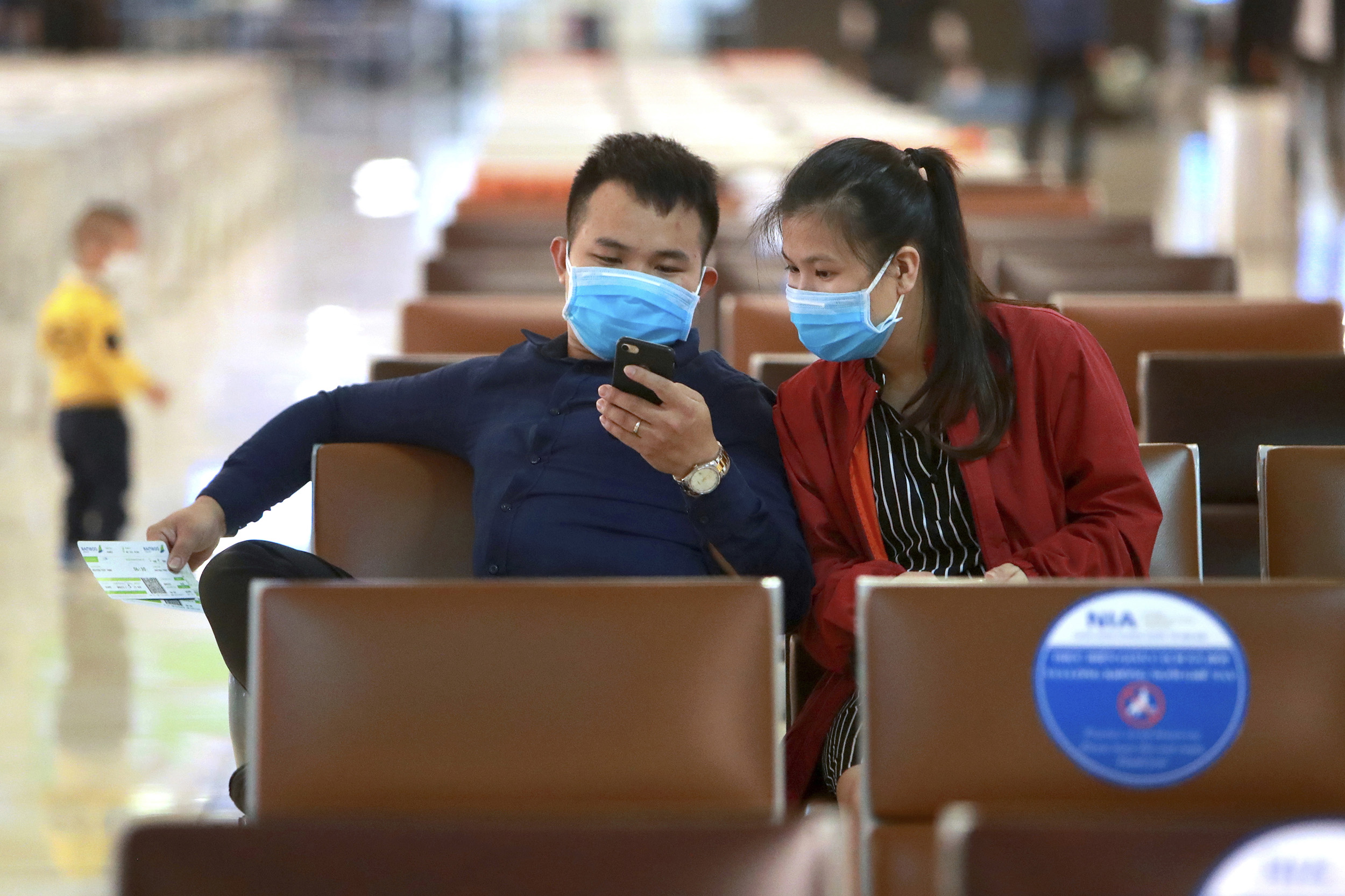
Passengers sit at a departure lounge at Hanoi airport in Hanoi, Vietnam, on Thursday, May 7. Hau Dinh/AP
When the world looked to Asia for successful examples in handling the novel coronavirus outbreak, most eyes were on South Korea, Taiwan and Hong Kong.
But there's one overlooked success story -- Vietnam.
The country of 97 million people is yet to report a single coronavirus-related death, and on Saturday had just 328 confirmed cases, despite its long border with China and the millions of Chinese visitors it receives each year.
This is all the more remarkable considering Vietnam is a low-middle income country with a much less advanced healthcare system than others in the region. It only has eight doctors for every 10,000 people, a third of the ratio in South Korea, according to the World Bank.
After a three-week nationwide lockdown, Vietnam lifted social distancing rules in late April. It hasn't reported any local infections for more than 40 days. Businesses and schools have reopened, and life is gradually returning to normal.
To skeptics, Vietnam's official numbers may seem too good to be true. But Guy Thwaites, an infectious disease doctor who works in one of the main hospitals designated by the Vietnamese government to treat Covid-19 patients, said the numbers matched the reality on the ground.
From CNN’s Matt Rivers in Mexico City

A hospital worker stands with images of colleagues who have died from Covid-19 during a protest in front of the National Palace in Mexico City on May 29. Eduardo Verdugo/AP
Mexico recorded 3,227 new coronavirus cases and 371 additional virus deaths on Friday.
The country’s death toll, now at 9,415, has roughly doubled in the last two weeks and remains the second-highest in Latin America, behind Brazil.
Mexico is likely to surpass 10,000 coronavirus deaths this weekend. Its total confirmed case count is now 84,627.
The government will start reopening limited sections of the economy in select parts of the country on Monday.
From CNN’s Maggie Fox
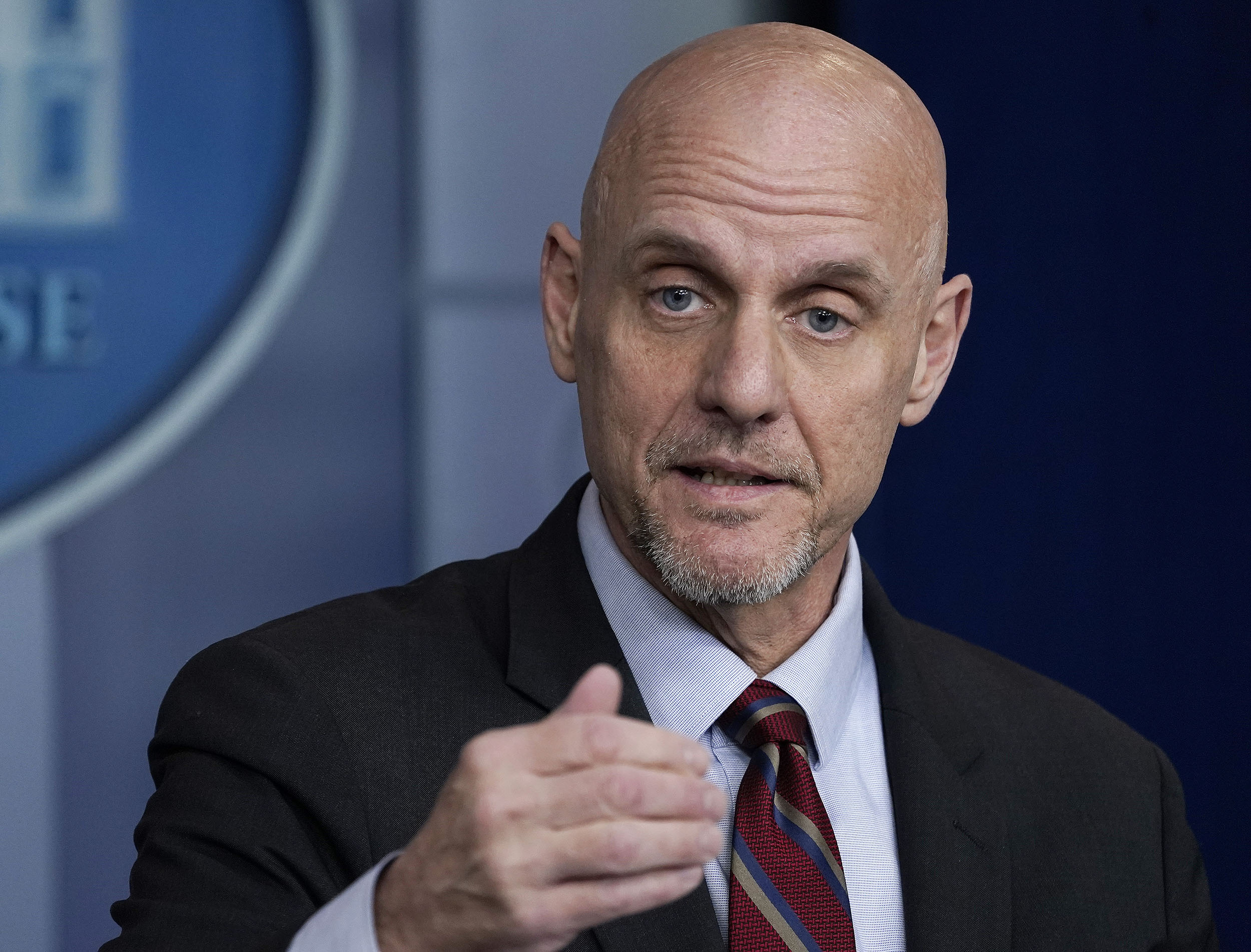
Stephen Hawn, director of the Food and Drug Administration, speaks during the coronavirus daily briefing at the White House in Washington D.C., on April 21. Drew Angerer/Getty Images
Combinations of antivirals, anti-inflammatories and other drugs will likely be needed to treat people with coronavirus, a team of US Food and Drug Administration scientists said Friday.
It might even be necessary to customize treatment patient by patient, the FDA team said in a review of the treatments being tested against Covid-19.
“As the results of clinical trials become available, it may become increasingly clear that there is likely no single magic bullet to resolve the disease but a combination of several interventions that target different key factors of COVID-19 may well be required,” FDA drug researcher Montserrat Puig and colleagues wrote in a report published in Frontiers of Immunology.
“Until vaccines and targeted drugs for COVID-19 are available, there may be a need to intervene with personalized therapeutic approaches. We are learning day after day, that patients may be affected by SARS-CoV-2 differently and that many factors influence the outcome of the disease.”
They reviewed 30 different drugs, including those designed to stop the virus from getting into cells, such as already-approved blood pressure drugs; drugs aimed at stopping the virus from replicating, such as the immune suppressors sirolimus and the antiparasitic drug ivermectin; drugs that control the immune system response, such as type 1 interferon; and drugs meant to block the overwrought inflammatory response to the virus, which include some rheumatoid arthritis drugs.
Different drugs could help people at different stages of the disease. Early on, it could be enough to stop the virus from getting into cells and replicating itself, Puig said. In patients with more severe disease, it will be more important to intervene in the body’s immune response to infection, which can include an overreaction known as the cytokine storm.
No drug is approved to specifically treat coronavirus infections, although the FDA has given emergency use authorization to the antiviral drug remdesivir.
From CNN's David Close
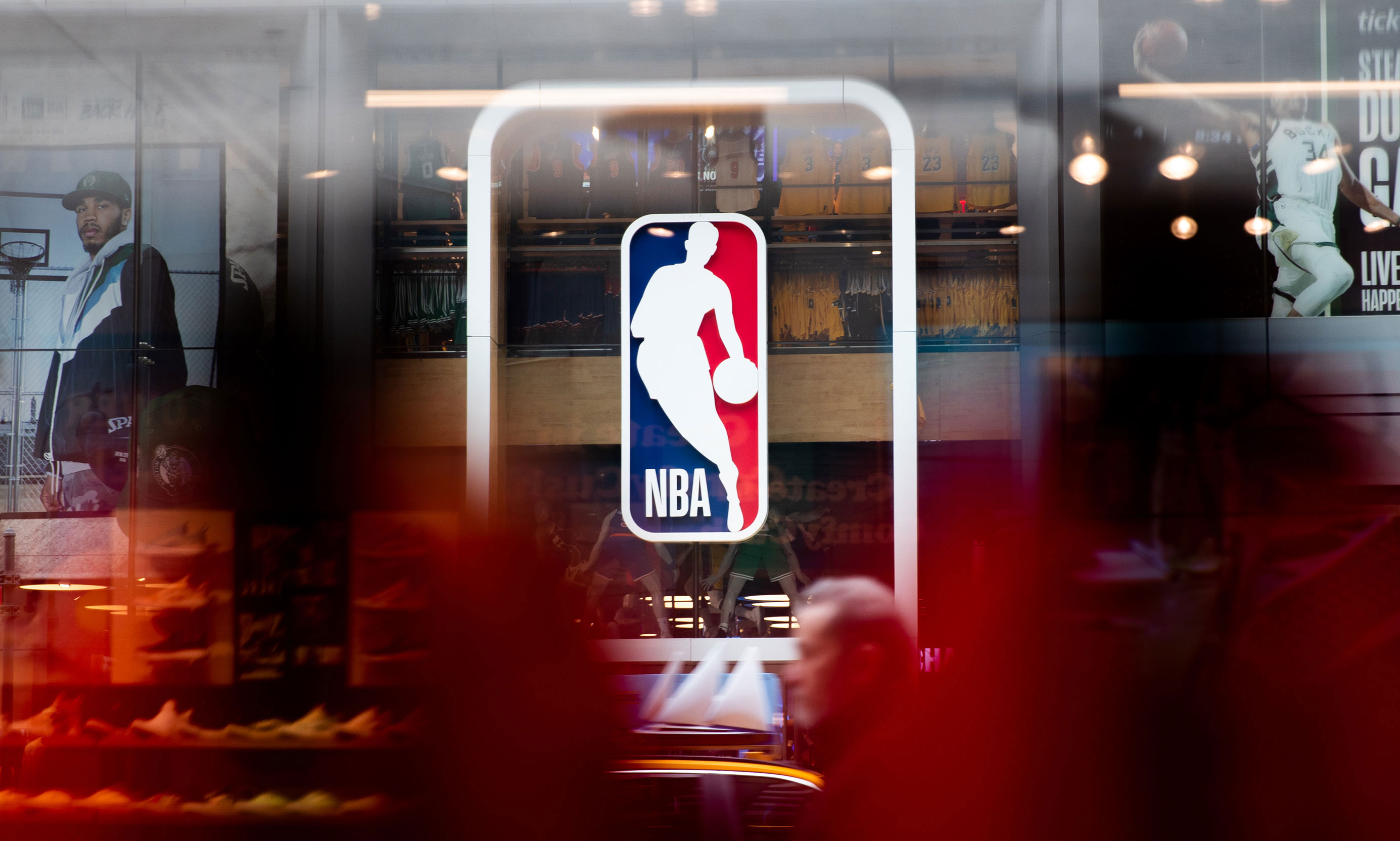
Pedestrians walk past an NBA store on March 12 in New York City. Jeenah Moon/Getty Images
NBA Commissioner Adam Silver and the league's Board of Governors are considering four possible scenarios to restart the suspended season.
ESPN's Adrian Wojnarowski and The Athletic's Shams Charania are reporting that Silver presented the options on Friday that owners will need to decide on before approaching the players union.
Both Wojnarowski and Charania, quoting unnamed sources, outlined four similar options:
ESPN’s Wojnarowski says the Board of Governors will vote on the proposals Thursday. Charania said Silver is targeting a July 31 restart date.
Asked about the reports, the NBA did not have a comment.
From CNN's Natasha Chen
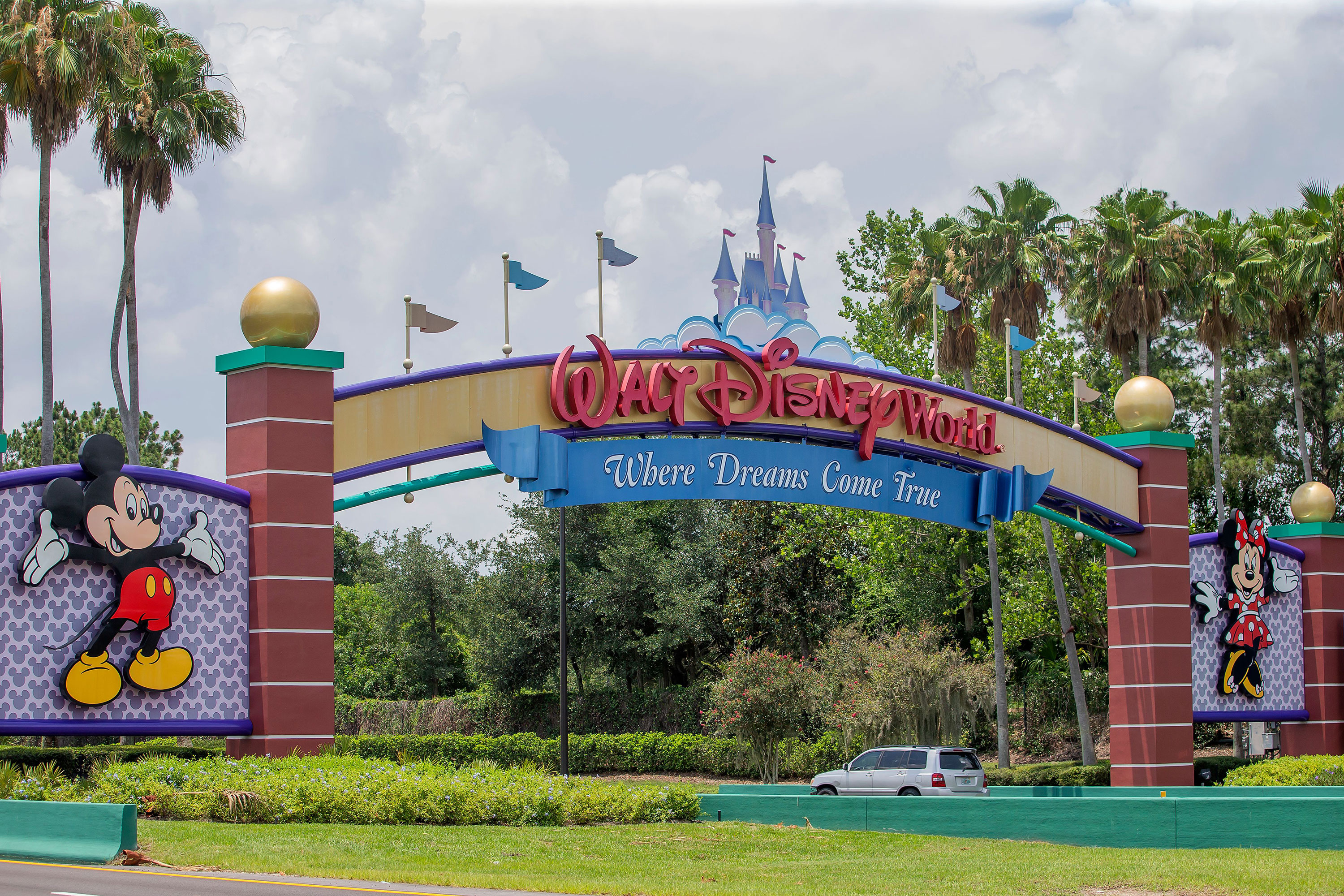
Shutterstock
Sea World will reopen on June 10, and Walt Disney World will begin the reopening process on July 11, according to correspondence from Florida's Department of Business and Professional Regulation.
Orange County Mayor Jerry Demings submitted an endorsement to the state after both parks presented reopening plans to the Orange County Economic Recovery Task Force Wednesday.
Source: https://edition.cnn.com/world/live-news/coronavirus-pandemic-05-30-20-intl/index.html